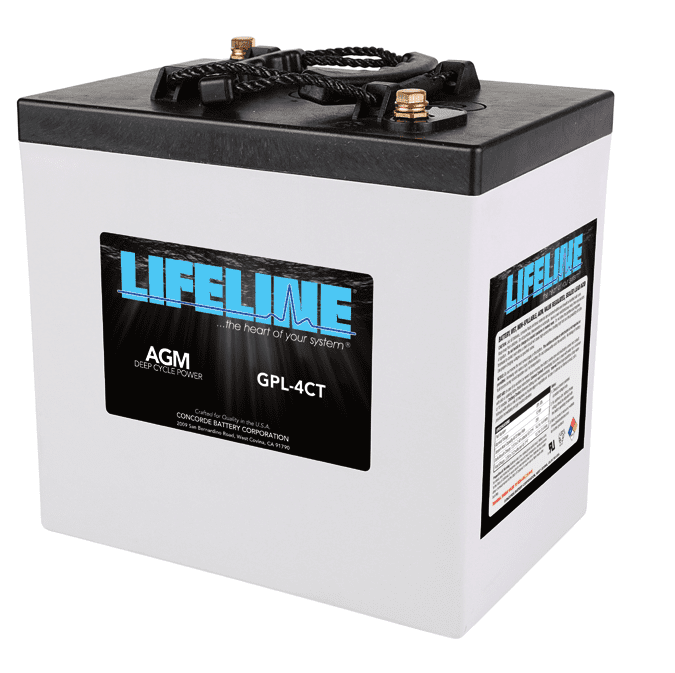
The voltage is higher than I ever remember seeing it and the batteries are taking a charge faster. With the equalizing all done now, the batteries seem better than new. (Don’t forget to turn off the breakers for all sensitive equipment so the high voltage doesn’t destroy said equipment. We read that we needed to monitor the temperature closely. It required only about 2 to 3 amps to do this. To equalize our AGM batteries, we needed to keep them at 15.5 volts for eight hours.
Lifeline agm batteries full#
It turns out that after a full charge, our solar regulator and solar panels did the job easily. This we could do with the inexpensive 10 amp, 220 volt charger we’d installed in New Zealand. We didn’t think our solar controller, with it’s conditioning function was an option I thought that it couldn’t provide the required power.įirst things first… go to the dock, plug in and get 100% charged. We just didn’t want to run our engine at idle for eight hours or more to use our alternator regulator.


Because of that, our battery charger was out. Our problem is we’re a 110 volt boat in 220-volt-land. We decided to go with the equalizing option (which some, probably more appropriately, call conditioning). We’re in Savusavu right now and we’ve been dealing with our battery trouble for about a week, investigating a bunch of options: getting new batteries in Fiji, equalizing (conditioning) our existing bank (but how?), or just trying to get by until New Zealand. Now, after only two and a half years, they looked like they’d had it. We hoped to be able to charge them quicker than our old Trojan T125 flooded cell batteries and we were looking forward to the maintenance-free aspect (sealed – never add water).Īfter just 18 months of cruising, they weren’t holding up as we’d hoped.
Lifeline agm batteries series#
We installed four Lifeline GPL 4CT 6 volt batteries (two each in series for 12 volts and those two banks in parallel for 440 amp-hours). We were so excited to try out AGM batteries. Nope: Boo, solution didn’t work out – see bottom of this post for details. Yay: maybe we have a solution to our problems with them…
Lifeline agm batteries professional#
Yay: well made by a very professional company.īoo: they’re not working out so well for us. The Lifeline Racing Battery electrical characteristics, and superior battery construction make them the Best battery choice among top racers and racing teams using 12 volt systems.If you have AGM batteries and read nothing else here, please jump down to the bold stuff and read that.

These batteries are even UL listed and the MSDS says they will not start fires. Then we package our battery in a light weight, yet tough battery container that meets Military Specifications for aircraft, vibration, and won`t leak. The compact size and high current capability, in conjunction with quick charging and discharging characteristics make our batteries the right choice for your racing electrical systems. Lifeline Racing batteries routinely provide 50% more cranking amps than similarly sized GEL CELL Batteries. Lifeline Racing batteries routinely provide 20% more power, when matched against similarly sized flooded batteries. This makes our batteries more powerful, able discharge and charge faster, and last longer than conventional batteries. The lack of resistance allows all of our batteries to discharge harder, faster, and longer without producing heat. Why are they better? Lifeline Racing Batteries boast industry leading low internal resistance. The Lifeline Racing Batteries are valve regulated, sealed lead acid (VRSLAB) recombinant gas, 12 volt, advanced glass mat (AGM) racing batteries.


 0 kommentar(er)
0 kommentar(er)
